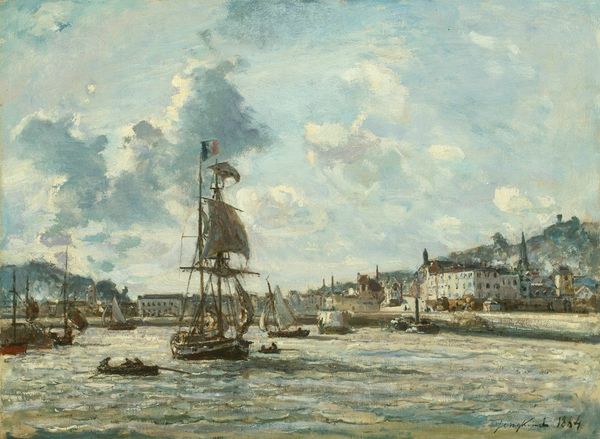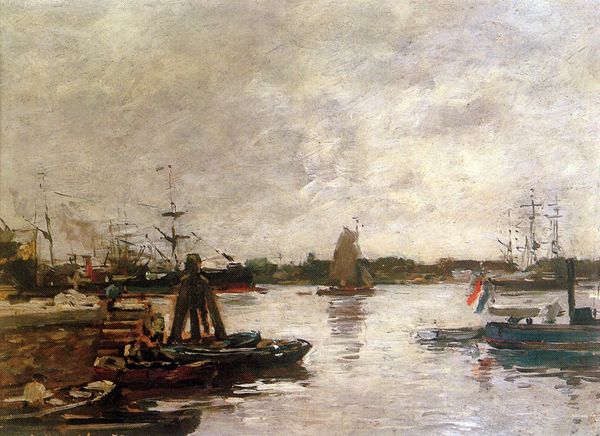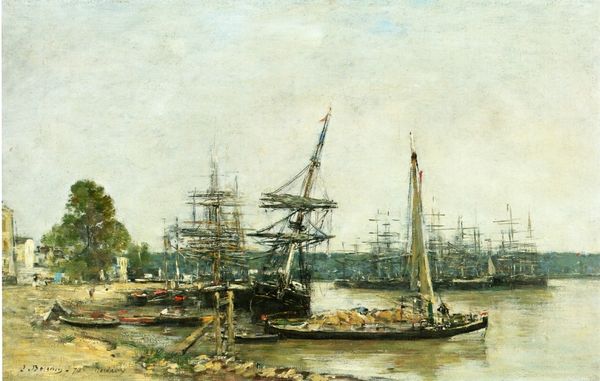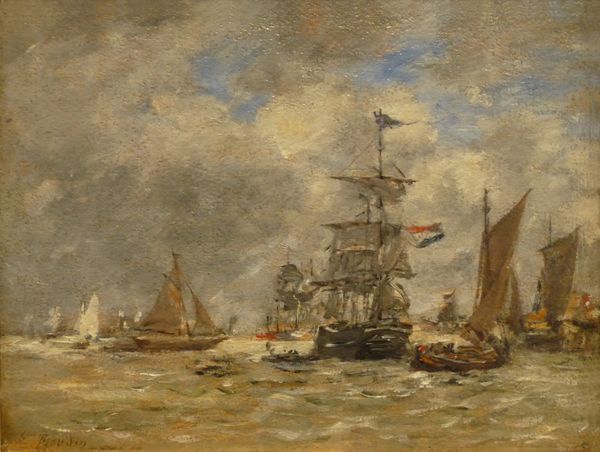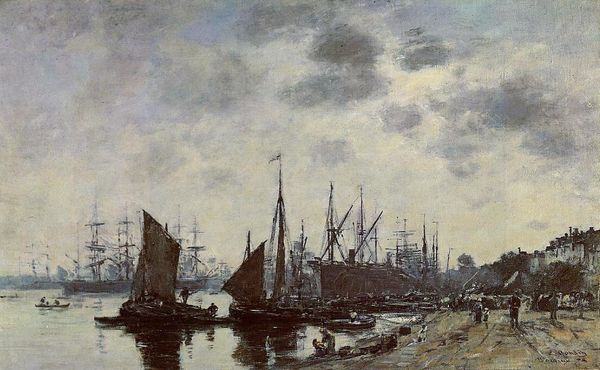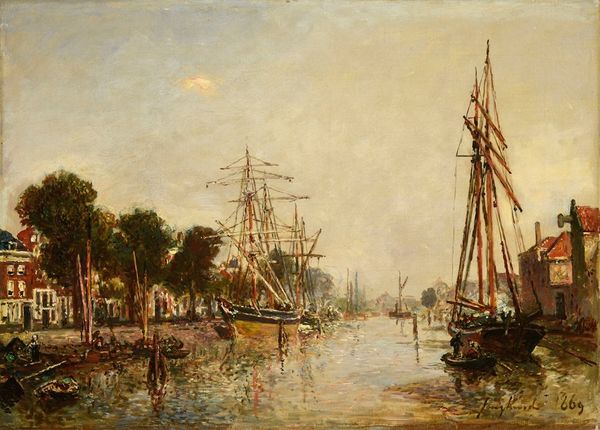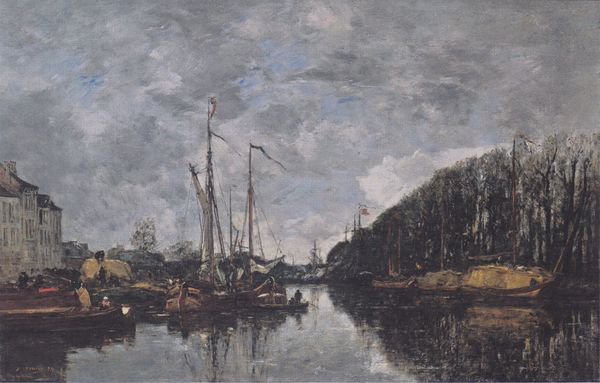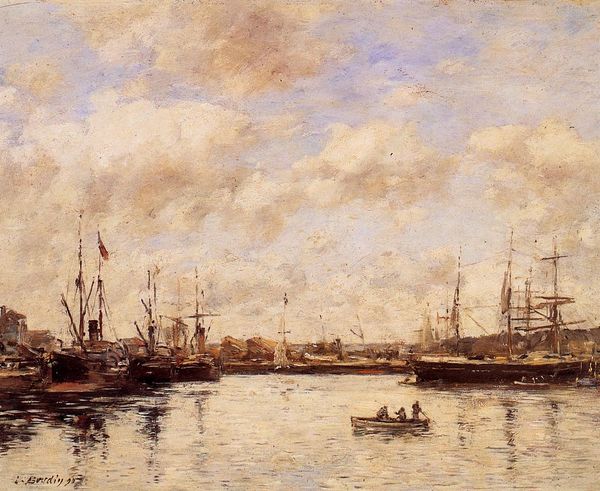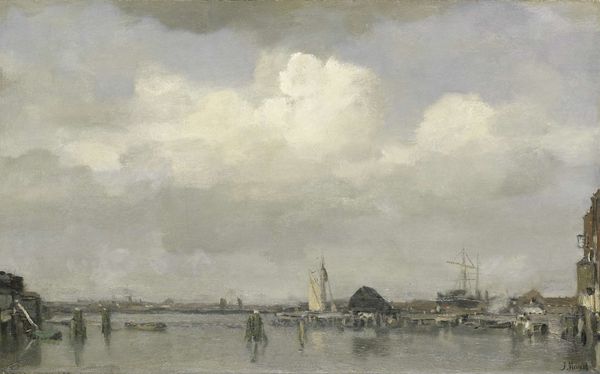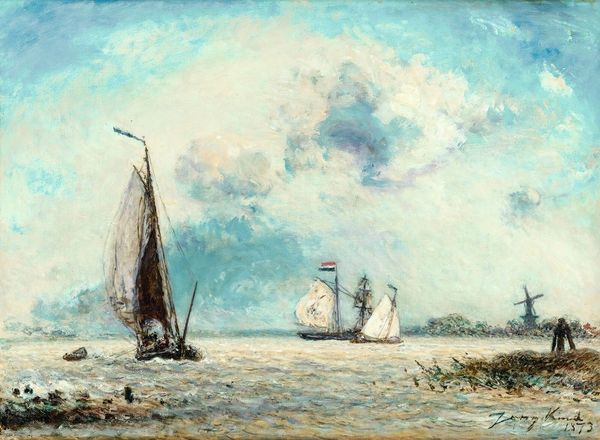
painting, plein-air, oil-paint
#
painting
#
impressionism
#
plein-air
#
oil-paint
#
landscape
#
charcoal drawing
#
figuration
#
oil painting
#
cityscape
#
mixed media
#
watercolor
Dimensions: 42.5 x 56 cm
Copyright: Public domain
Curator: At first glance, it feels almost…sepia-toned. As if the colours are holding their breath. A memory caught on canvas. Editor: Indeed. What we’re seeing here is Johan Barthold Jongkind's, “Entrée de port, Honfleur,” created in 1866. It’s currently housed at the Musée d'Orsay. It captures a port scene with remarkable atmospheric sensitivity. It's hard to think about French landscape without including Honfleur, a real melting pot for new ideas about painting in the mid-19th century. Curator: Atmospheric is the perfect word. It’s less about the details of the ships, which are fascinating enough, and more about how the light and sky interact. Those brushstrokes in the clouds—they give the sense of constant movement. Makes you want to pull your collar up. Editor: Exactly! And it’s not accidental. Jongkind worked extensively en plein air, directly observing and documenting the nuances of the light and atmosphere, influenced, of course, by predecessors such as Constable. You see him wrestling with those transient effects. That’s what ties him into the emerging Impressionist aesthetic. Curator: He was an influence on Monet, wasn’t he? I can almost see Monet in that hazy reflection on the water. Though Jongkind keeps a tighter grip on form, maybe? Monet might have dissolved the ships entirely into light. Editor: Precisely. Jongkind maintains a certain structural integrity, a clarity of form that separates him from the more radical Impressionists who followed. Yet his concentration on fleeting atmospheric conditions paved the way for their innovations. Also consider the political context; landscape becomes more valued as a modern form as it connects to feelings of homeland at a time of nation-state building in Europe. Curator: Homeland… yes. It's not just a picture of boats, it feels personal. As if Jongkind is offering up a little piece of himself alongside Honfleur. Something quietly profound in seeing and translating it to paint, the smell of saltwater and industry all in the sky's quick shift of pigment. Editor: Beautifully put. Jongkind’s "Entrée de port, Honfleur" encapsulates a pivotal moment in art history. It stands as a powerful document in its own right, while simultaneously prefiguring future movements. Curator: It does reward patience. The more you look, the more you notice all the things he’s chosen to hold in focus—and let drift. Editor: And, like any successful work, it continues to invite conversations generations later, it still challenges perceptions of landscape, perception, and, indeed, what it means to call a place home.
Comments
No comments
Be the first to comment and join the conversation on the ultimate creative platform.
